+ Open data
Open data
- Basic information
Basic information
| Entry | Database: PDB / ID: 6mun | ||||||
|---|---|---|---|---|---|---|---|
| Title | Structure of hRpn10 bound to UBQLN2 UBL | ||||||
 Components Components |
| ||||||
 Keywords Keywords | STRUCTURAL PROTEIN / proteasome / shuttle factor / Complex | ||||||
| Function / homology |  Function and homology information Function and homology informationnegative regulation of G protein-coupled receptor internalization / negative regulation of clathrin-dependent endocytosis / positive regulation of ERAD pathway / regulation of autophagosome assembly / proteasome accessory complex / proteasome regulatory particle, base subcomplex / Proteasome assembly / polyubiquitin modification-dependent protein binding / autophagosome assembly / regulation of macroautophagy ...negative regulation of G protein-coupled receptor internalization / negative regulation of clathrin-dependent endocytosis / positive regulation of ERAD pathway / regulation of autophagosome assembly / proteasome accessory complex / proteasome regulatory particle, base subcomplex / Proteasome assembly / polyubiquitin modification-dependent protein binding / autophagosome assembly / regulation of macroautophagy / ERAD pathway / autophagosome / proteasome complex / molecular condensate scaffold activity / Cargo recognition for clathrin-mediated endocytosis / cytoplasmic vesicle / ubiquitin-dependent protein catabolic process / molecular adaptor activity / proteasome-mediated ubiquitin-dependent protein catabolic process / RNA binding / nucleoplasm / identical protein binding / nucleus / plasma membrane / cytoplasm / cytosol Similarity search - Function | ||||||
| Biological species |  Homo sapiens (human) Homo sapiens (human) | ||||||
| Method | SOLUTION NMR / simulated annealing | ||||||
 Authors Authors | Chen, X. / Walters, K.J. | ||||||
| Funding support |  United States, 1items United States, 1items
| ||||||
 Citation Citation |  Journal: J.Mol.Biol. / Year: 2019 Journal: J.Mol.Biol. / Year: 2019Title: Structure of hRpn10 Bound to UBQLN2 UBL Illustrates Basis for Complementarity between Shuttle Factors and Substrates at the Proteasome. Authors: Chen, X. / Ebelle, D.L. / Wright, B.J. / Sridharan, V. / Hooper, E. / Walters, K.J. | ||||||
| History |
|
- Structure visualization
Structure visualization
| Structure viewer | Molecule:  Molmil Molmil Jmol/JSmol Jmol/JSmol |
|---|
- Downloads & links
Downloads & links
- Download
Download
| PDBx/mmCIF format |  6mun.cif.gz 6mun.cif.gz | 809.3 KB | Display |  PDBx/mmCIF format PDBx/mmCIF format |
|---|---|---|---|---|
| PDB format |  pdb6mun.ent.gz pdb6mun.ent.gz | 683.3 KB | Display |  PDB format PDB format |
| PDBx/mmJSON format |  6mun.json.gz 6mun.json.gz | Tree view |  PDBx/mmJSON format PDBx/mmJSON format | |
| Others |  Other downloads Other downloads |
-Validation report
| Summary document |  6mun_validation.pdf.gz 6mun_validation.pdf.gz | 432.4 KB | Display |  wwPDB validaton report wwPDB validaton report |
|---|---|---|---|---|
| Full document |  6mun_full_validation.pdf.gz 6mun_full_validation.pdf.gz | 579.2 KB | Display | |
| Data in XML |  6mun_validation.xml.gz 6mun_validation.xml.gz | 53.7 KB | Display | |
| Data in CIF |  6mun_validation.cif.gz 6mun_validation.cif.gz | 71.5 KB | Display | |
| Arichive directory |  https://data.pdbj.org/pub/pdb/validation_reports/mu/6mun https://data.pdbj.org/pub/pdb/validation_reports/mu/6mun ftp://data.pdbj.org/pub/pdb/validation_reports/mu/6mun ftp://data.pdbj.org/pub/pdb/validation_reports/mu/6mun | HTTPS FTP |
-Related structure data
| Related structure data | |
|---|---|
| Similar structure data | |
| Other databases |
|
- Links
Links
- Assembly
Assembly
| Deposited unit | 
| |||||||||
|---|---|---|---|---|---|---|---|---|---|---|
| 1 |
| |||||||||
| NMR ensembles |
|
- Components
Components
| #1: Protein | Mass: 11826.878 Da / Num. of mol.: 1 / Fragment: UNP Residues 196-306 Source method: isolated from a genetically manipulated source Source: (gene. exp.)  Homo sapiens (human) / Gene: PSMD4, MCB1 / Production host: Homo sapiens (human) / Gene: PSMD4, MCB1 / Production host:  |
|---|---|
| #2: Protein | Mass: 8764.189 Da / Num. of mol.: 2 / Fragment: UNP Residues 26-103 Source method: isolated from a genetically manipulated source Source: (gene. exp.)  Homo sapiens (human) / Gene: UBQLN2, N4BP4, PLIC2, HRIHFB2157 / Production host: Homo sapiens (human) / Gene: UBQLN2, N4BP4, PLIC2, HRIHFB2157 / Production host:  |
-Experimental details
-Experiment
| Experiment | Method: SOLUTION NMR | ||||||||||||||||||||||||||||||||||||||||||||||||||||||||||||||||||||||||||||||||||||||||||||||||||||||||||||||||||
|---|---|---|---|---|---|---|---|---|---|---|---|---|---|---|---|---|---|---|---|---|---|---|---|---|---|---|---|---|---|---|---|---|---|---|---|---|---|---|---|---|---|---|---|---|---|---|---|---|---|---|---|---|---|---|---|---|---|---|---|---|---|---|---|---|---|---|---|---|---|---|---|---|---|---|---|---|---|---|---|---|---|---|---|---|---|---|---|---|---|---|---|---|---|---|---|---|---|---|---|---|---|---|---|---|---|---|---|---|---|---|---|---|---|---|---|
| NMR experiment |
|
- Sample preparation
Sample preparation
| Details |
| |||||||||||||||||||||||||||||||||||||||||||||||||||||||||||||||||||||||||
|---|---|---|---|---|---|---|---|---|---|---|---|---|---|---|---|---|---|---|---|---|---|---|---|---|---|---|---|---|---|---|---|---|---|---|---|---|---|---|---|---|---|---|---|---|---|---|---|---|---|---|---|---|---|---|---|---|---|---|---|---|---|---|---|---|---|---|---|---|---|---|---|---|---|---|
| Sample |
|
 Movie
Movie Controller
Controller





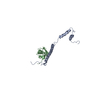
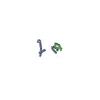
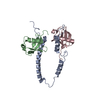
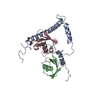
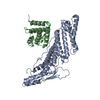



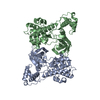
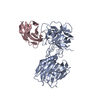
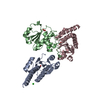
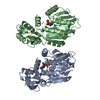
 PDBj
PDBj




 HSQC
HSQC